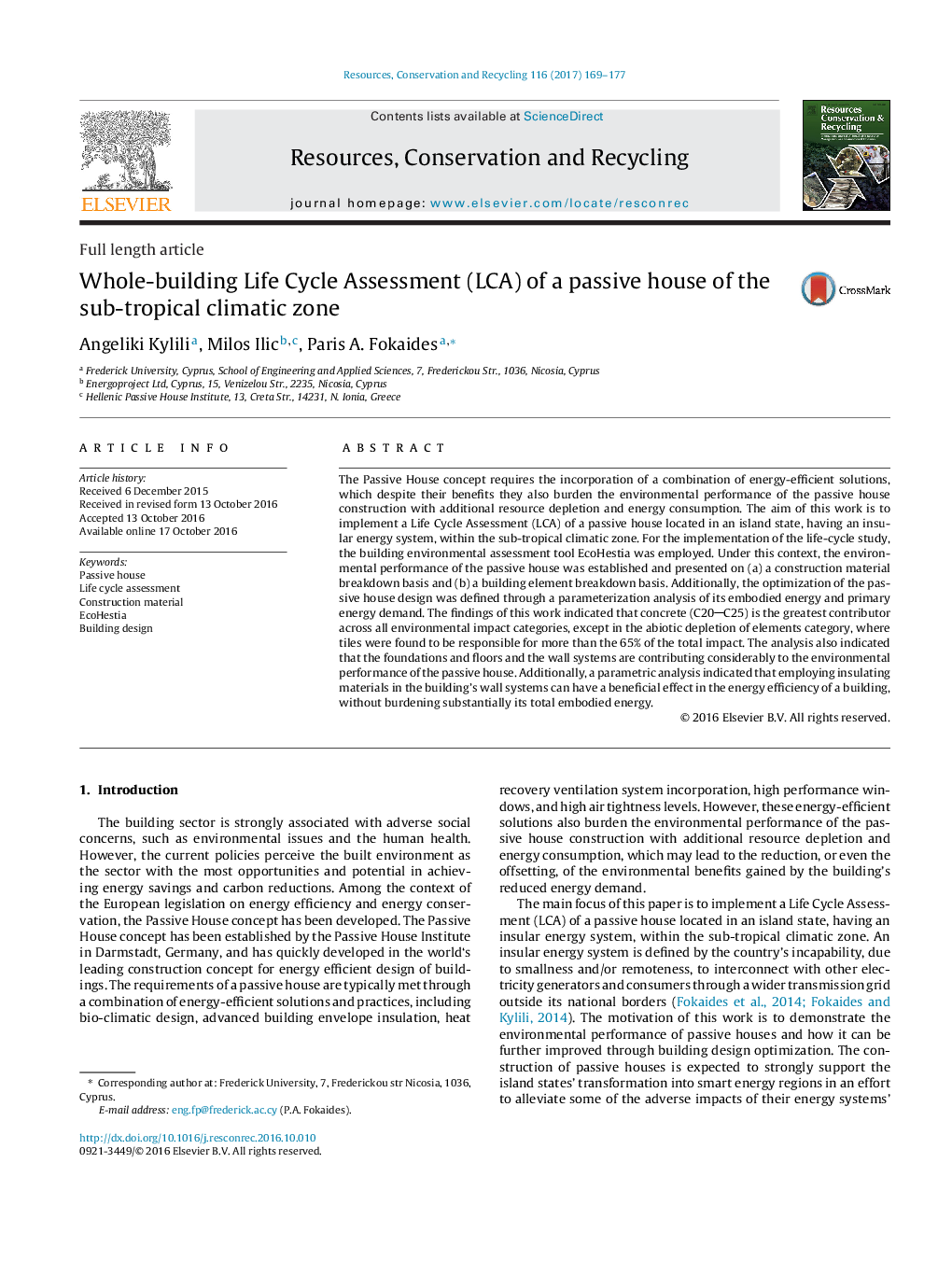| کد مقاله | کد نشریه | سال انتشار | مقاله انگلیسی | نسخه تمام متن |
|---|---|---|---|---|
| 5118766 | 1485675 | 2017 | 9 صفحه PDF | دانلود رایگان |

- In this work the LCA of a passive house, located in an insular island state within the sub-tropical climatic zone, is implemented.
- Concrete is the greatest contributor across all environmental impact categories by more than 55%.
- Plasterboards, plywood, mineral wool, and tiles have significant impact on the environmental performance results.
- Additional insulating materials in the building's wall systems does not affect significantly the building's embodied energy.
The Passive House concept requires the incorporation of a combination of energy-efficient solutions, which despite their benefits they also burden the environmental performance of the passive house construction with additional resource depletion and energy consumption. The aim of this work is to implement a Life Cycle Assessment (LCA) of a passive house located in an island state, having an insular energy system, within the sub-tropical climatic zone. For the implementation of the life-cycle study, the building environmental assessment tool EcoHestia was employed. Under this context, the environmental performance of the passive house was established and presented on (a) a construction material breakdown basis and (b) a building element breakdown basis. Additionally, the optimization of the passive house design was defined through a parameterization analysis of its embodied energy and primary energy demand. The findings of this work indicated that concrete (C20C25) is the greatest contributor across all environmental impact categories, except in the abiotic depletion of elements category, where tiles were found to be responsible for more than the 65% of the total impact. The analysis also indicated that the foundations and floors and the wall systems are contributing considerably to the environmental performance of the passive house. Additionally, a parametric analysis indicated that employing insulating materials in the building's wall systems can have a beneficial effect in the energy efficiency of a building, without burdening substantially its total embodied energy.
Journal: Resources, Conservation and Recycling - Volume 116, January 2017, Pages 169-177